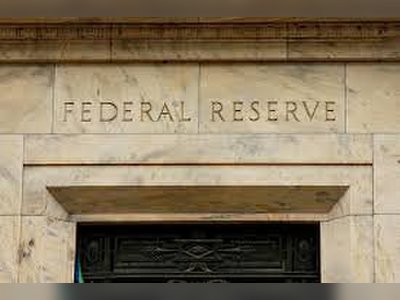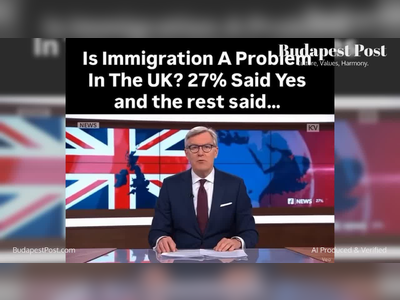Global Economic Outlook Amidst Rising Inflation and Geopolitical Tensions
Key indicators highlight challenges in global markets as inflation rates climb and geopolitical risks increase.
The global economic landscape is currently facing significant headwinds marked by increasing inflation rates and persistent geopolitical tensions.
Recent data indicates that inflation has reached multi-decade highs in various regions, including the United States and Europe, prompting central banks to implement aggressive monetary policies.
In the United States, inflation surged to 8.3% year-on-year in August 2022, fueled by rising energy prices and supply chain disruptions.
The Federal Reserve has responded by enacting a series of interest rate hikes, with the federal funds rate rising to a target range of 3.00% to 3.25% as of September 2022. This move aims to curb consumer spending and investment to rein in price increases.
Similarly, the European Central Bank (ECB) has indicated its intent to address soaring prices, with inflation in the Eurozone hitting a record 9.1% in August 2022. The ECB began raising interest rates in July 2022 for the first time in over a decade, with a 50 basis point increase affecting borrowing costs throughout the Eurozone.
Alongside inflation, geopolitical tensions are further complicating the economic outlook.
The ongoing conflict in Ukraine has resulted in sweeping sanctions against Russia and has disrupted energy supplies, particularly in Europe, which has seen natural gas prices skyrocket as a result.
The strain on energy supplies has led to widespread concerns about energy security and rising costs for consumers and businesses.
Additionally, supply chain disruptions stemming from the COVID-19 pandemic continue to impact various sectors, notably technology and manufacturing, exacerbating inflationary pressures as demand outpaces supply.
The semiconductor shortage, for instance, has affected automotive production, leading to decreased vehicle inventories and, consequently, higher prices.
The situation has led to a revision of growth forecasts by several international financial institutions.
The International Monetary Fund (IMF) projects that global growth will slow to 3.2% in 2022, down from 6.0% in the previous year, as economies navigate the consequences of elevated inflation and tightening monetary policies.
These dynamics have heightened concerns about potential recessions in major economies, with analysts monitoring indicators such as job growth, consumer spending, and industrial output for signs of economic resilience.
As uncertainty continues, governments and policymakers are being urged to find balanced approaches to stimulate growth while maintaining inflation targets.
Recent data indicates that inflation has reached multi-decade highs in various regions, including the United States and Europe, prompting central banks to implement aggressive monetary policies.
In the United States, inflation surged to 8.3% year-on-year in August 2022, fueled by rising energy prices and supply chain disruptions.
The Federal Reserve has responded by enacting a series of interest rate hikes, with the federal funds rate rising to a target range of 3.00% to 3.25% as of September 2022. This move aims to curb consumer spending and investment to rein in price increases.
Similarly, the European Central Bank (ECB) has indicated its intent to address soaring prices, with inflation in the Eurozone hitting a record 9.1% in August 2022. The ECB began raising interest rates in July 2022 for the first time in over a decade, with a 50 basis point increase affecting borrowing costs throughout the Eurozone.
Alongside inflation, geopolitical tensions are further complicating the economic outlook.
The ongoing conflict in Ukraine has resulted in sweeping sanctions against Russia and has disrupted energy supplies, particularly in Europe, which has seen natural gas prices skyrocket as a result.
The strain on energy supplies has led to widespread concerns about energy security and rising costs for consumers and businesses.
Additionally, supply chain disruptions stemming from the COVID-19 pandemic continue to impact various sectors, notably technology and manufacturing, exacerbating inflationary pressures as demand outpaces supply.
The semiconductor shortage, for instance, has affected automotive production, leading to decreased vehicle inventories and, consequently, higher prices.
The situation has led to a revision of growth forecasts by several international financial institutions.
The International Monetary Fund (IMF) projects that global growth will slow to 3.2% in 2022, down from 6.0% in the previous year, as economies navigate the consequences of elevated inflation and tightening monetary policies.
These dynamics have heightened concerns about potential recessions in major economies, with analysts monitoring indicators such as job growth, consumer spending, and industrial output for signs of economic resilience.
As uncertainty continues, governments and policymakers are being urged to find balanced approaches to stimulate growth while maintaining inflation targets.
AI Disclaimer: An advanced artificial intelligence (AI) system generated the content of this page on its own. This innovative technology conducts extensive research from a variety of reliable sources, performs rigorous fact-checking and verification, cleans up and balances biased or manipulated content, and presents a minimal factual summary that is just enough yet essential for you to function as an informed and educated citizen. Please keep in mind, however, that this system is an evolving technology, and as a result, the article may contain accidental inaccuracies or errors. We urge you to help us improve our site by reporting any inaccuracies you find using the "Contact Us" link at the bottom of this page. Your helpful feedback helps us improve our system and deliver more precise content. When you find an article of interest here, please look for the full and extensive coverage of this topic in traditional news sources, as they are written by professional journalists that we try to support, not replace. We appreciate your understanding and assistance.











